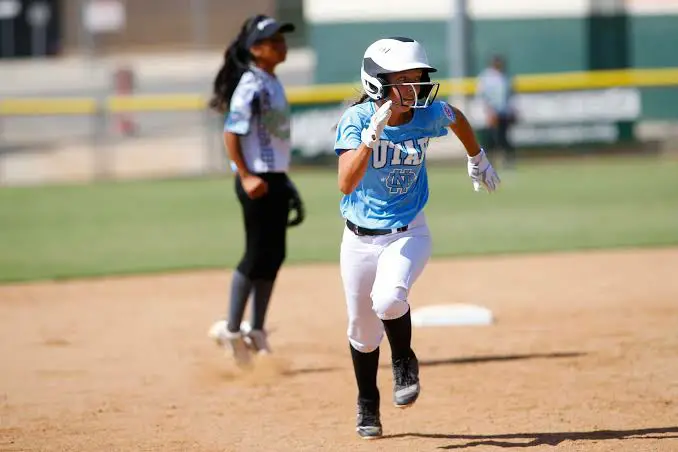Softball Major rules on Offense
All batters are required to wear facemasks with their batting helmets.
There is no on-deck circle. Dugout players (other than the current at-bat player) are not permitted to utilize hitting sticks or take practice swings outside the dugout. Neither batting sleeves nor “donuts” of any kind are permitted.
When approaching a base, runners are allowed to slip feet first (no head-first slides to a base they have not reached yet). When sliding back to a base they’ve already passed, they can go feet-first or head-first.
On overthrows, runners may advance one base at a time. Play is stopped when the pitcher takes possession of the ball inside the pitcher’s circle or the umpire calls time.
It’s okay to steal. The runners may advance to the next base whenever the pitcher releases the ball.
In Majors softball, coaches cannot change their pitcher’s pitches.
Ten (10) runs, the most that may be scored in a single inning. Whether the defense gets three outs to end the at-bat or the offense scores ten runs, the team with the bat has won the round.
If a runner leaves a base before the pitch is launched, or if the pitcher holds control of the ball in the pitcher’s circle without making a play on any runner (where “making a play” includes faking a throw to a base), the runner is out.

Softball Major Rules on Defense
When it comes to defense, each team uses nine players.
All catchers must wear protective equipment, including shin guards, a chest protector, and a catcher’s helmet with a throat guard that dangles down. A catcher can use a fielder’s glove or a catcher’s mitt.
Every pitch thrown must be within the rules. A ball will be called to the batter if an illegal pitch is made, but runners will not advance.
Pitchers are mandated to wear a protective mask while on the field. Defensive face masks are strongly recommended by infielders and outfielders (other than the catcher) but not mandated.
Pitchers are allowed to throw up to 12 innings in a single day. The rules state that if a pitcher throws seven or more innings in a single day, she must wait one full day before throwing again.
Game Rules
The game must go on for at least one hour and forty-five minutes, or until it reaches its maximum of six innings, whichever occurs first.

The game must go on for at least one hour and forty-five minutes, or until it reaches its maximum of six innings, whichever occurs first. At 1 hour and 45 minutes into the game, the inning that is currently being played will be finished in its entirety unless any of the following conditions are met:
The home team has the lead and is at bat after time has expired.
The home team gains the lead after time has expired.
The visiting team has a lead of six or more runs after time has expired.
Following the completion of the third out in the previous inning, the next inning will begin officially.
The game is over if there is a lead of 10 runs or more after three innings (or 3 1/2 if the home team has the lead). The game is also over if there is a lead of 15 runs or more after four innings (or 4 1/2 if the home team has the lead).
The distance between the home plate and the pitcher’s plate is 40 feet. Solid-core.
All Divisions
Batting helmets with face shields are mandatory equipment.
Avoid using baseball bats unless they bear the USA Baseball stamp, as required by the new USA Baseball Rule for all bats that are not BBCOR certified. Softball bats are exempt from this restriction (but they must still include the BPF rating stamp). Softball bats having a BPF value of 1.20 are required.
All sub-divisions have a base path distance of 60 feet.
Due to the close range, pitchers in the Farm, Minor Leagues, and Major Leagues are obliged to wear protective facemasks.
For the younger levels (Farm and Minors), the pitching distance is 35 feet; for the older levels (Majors and Juniors/Seniors), it is 40 feet.
Here is a breakdown of ball sizes: Those on the farm: 11 feet (soft core); those in the minors: 11 feet (solid core); and those in the majors/juniors/seniors: 12 feet
Across all Little League age groups, the mercy rule of 10 runs is in effect. In the lower levels, this occurs after four innings; in the majors and beyond, it happens after 5.
There are a variety of game lengths, including time spent on the farm: 75 minutes; minors: 90 minutes; majors: 105 minutes; juniors/seniors: 105 minutes.
Only three coaches per side are permitted on the field at any given time, with at least one staying in the dugout.
Players in the minor leagues and the majors are not permitted to utilize hitting sticks or take practice swings outside the dugout while waiting for their time at bat.
In both Junior and Senior leagues, batting sleeves, or “donuts,” are not permitted in the on-deck circle.
